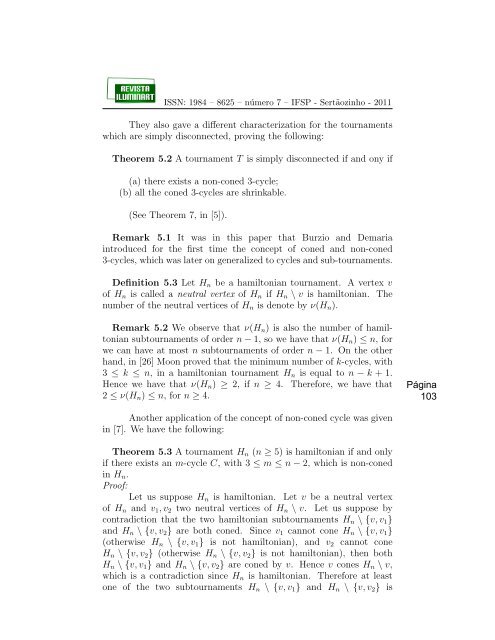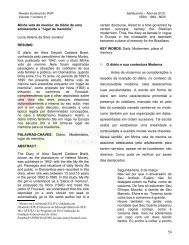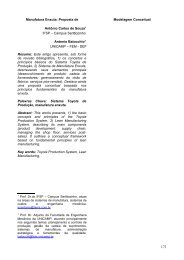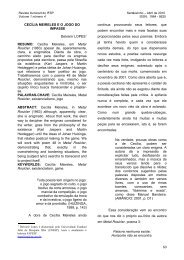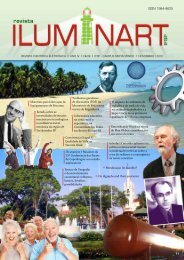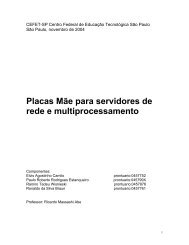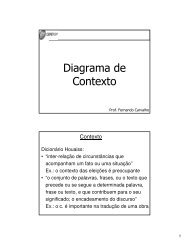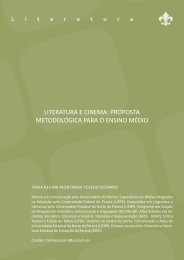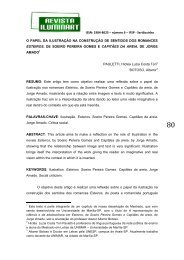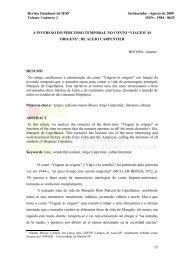Página 97
Página 97
Página 97
Create successful ePaper yourself
Turn your PDF publications into a flip-book with our unique Google optimized e-Paper software.
ISSN: 1984 – 8625 – número 7 – IFSP - Sertãozinho - 2011<br />
They also gave a different characterization for the tournaments<br />
which are simply disconnected, proving the following:<br />
Theorem 5.2 A tournament T is simply disconnected if and ony if<br />
(a) there exists a non-coned 3-cycle;<br />
(b) all the coned 3-cycles are shrinkable.<br />
(See Theorem 7, in [5]).<br />
Remark 5.1 It was in this paper that Burzio and Demaria<br />
introduced for the first time the concept of coned and non-coned<br />
3-cycles, which was later on generalized to cycles and sub-tournaments.<br />
Definition 5.3 Let Hn be a hamiltonian tournament. A vertex v<br />
of Hn is called a neutral vertex of Hn if Hn \ v is hamiltonian. The<br />
number of the neutral vertices of Hn is denote by ν(Hn).<br />
Remark 5.2 We observe that ν(Hn) is also the number of hamiltonian<br />
subtournaments of order n − 1, so we have that ν(Hn) ≤ n, for<br />
we can have at most n subtournaments of order n − 1. On the other<br />
hand, in [26] Moon proved that the minimum number of k-cycles, with<br />
3 ≤ k ≤ n, in a hamiltonian tournament Hn is equal to n − k + 1.<br />
Hence we have that ν(Hn) ≥ 2, if n ≥ 4. Therefore, we have that<br />
2 ≤ ν(Hn) ≤ n, for n ≥ 4.<br />
Another application of the concept of non-coned cycle was given<br />
in [7]. We have the following:<br />
Theorem 5.3 A tournament Hn (n ≥ 5) is hamiltonian if and only<br />
if there exists an m-cycle C, with 3 ≤ m ≤ n − 2, which is non-coned<br />
in Hn.<br />
Proof:<br />
Let us suppose Hn is hamiltonian. Let v be a neutral vertex<br />
of Hn and v1, v2 two neutral vertices of Hn \ v. Let us suppose by<br />
contradiction that the two hamiltonian subtournaments Hn \ {v, v1}<br />
and Hn \ {v, v2} are both coned. Since v1 cannot cone Hn \ {v, v1}<br />
(otherwise Hn \ {v, v1} is not hamiltonian), and v2 cannot cone<br />
Hn \ {v, v2} (otherwise Hn \ {v, v2} is not hamiltonian), then both<br />
Hn \ {v, v1} and Hn \ {v, v2} are coned by v. Hence v cones Hn \ v,<br />
which is a contradiction since Hn is hamiltonian. Therefore at least<br />
one of the two subtournaments Hn \ {v, v1} and Hn \ {v, v2} is<br />
<strong>Página</strong><br />
103


